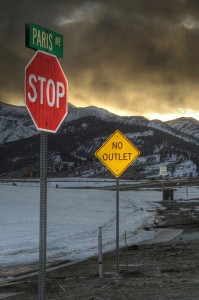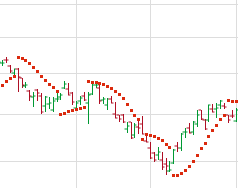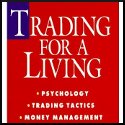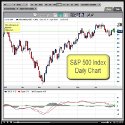 If you’re trading without a “stop,” you are playing Russian Roulette with your money. “Stop Loss Orders” or “stops” are orders you place with your brokers to indicate that if your position moves against you to a certain point you will exit the trade. You have a “stop price” where if the issue trades at that price or worse, the order turns into a market order to sell or buy. Many traders don’t actually place the order but have a price at which they will exit the trade, which they still call a “stop.” In fact some traders prefer not to place an actual order because they fear they will influence price execution and get “stopped out” when they wouldn’t have otherwise. Regardless of how you execute the exit, you should never enter any position without a price at which you know you’re wrong and get out of the trade.
If you’re trading without a “stop,” you are playing Russian Roulette with your money. “Stop Loss Orders” or “stops” are orders you place with your brokers to indicate that if your position moves against you to a certain point you will exit the trade. You have a “stop price” where if the issue trades at that price or worse, the order turns into a market order to sell or buy. Many traders don’t actually place the order but have a price at which they will exit the trade, which they still call a “stop.” In fact some traders prefer not to place an actual order because they fear they will influence price execution and get “stopped out” when they wouldn’t have otherwise. Regardless of how you execute the exit, you should never enter any position without a price at which you know you’re wrong and get out of the trade.
The Psychology of the Stop
The psychology of trading is fraught with peril. In many ways once the trade is on you can become fixated on making that trade work out. The problem is, when you’re doing the research and working out your trade, you’re perfectly rational. Once you’ve placed the order however, you can start lying to yourself and costing yourself money by convincing yourself to stay with a trade that’s turned against you. By always trading with a stop, you can set the extent of your trade while you’re still acting completely rationally. This can be a huge money saver.
When you’re deciding to enter a trade, you should be deciding a priace at which you’ve been proven wrong. You have reasons why you think the market is going to move in a certain way, which is why you’re considering entering the postion. You also need to set at what price your analysis no longer holds true and it’s time to get out. By doing this while you still have all your pros and cons fresh in your mind you can make the best decision and prevent yourself from taking unnecessary chances.
Moving the Stop
Another key thing to remember is that once you’re in the trade you don’t just forget about your stop. By moving your stop you can also keep from giving back all your profits or making other costly mistakes. Never let a profit run into a loss. Here you can see a subsection of a chart of the S&P 500 Index [Trend Analysis]. This chart has the parabolic indicator overlaid on it which is one strategy for moving your stop while in a trade.We’ll discuss Parabolic in another article, but it provides a useful visual of how a stop might move during a trade. It also illustrates that this also doesn’t apply only when going long but when going short as well. You should always be looking for when you’ve been proven wrong and cut your losses when you have been.
You Don’t Have To Always Be Right
No one is right all the time, and trading with stops are simply a matter of managing your money to reflect this. If you are right only one half of the time but make more when you’re right than you lose when you’re wrong, you will have success. You are trying to play the odds and you want to make sure that when you’re wrong, you minimize the damage and that when you’re right, you maximize the reward.
Ultimately the stop is your protection from catastrophe. Many people don’t want to be wrong, but I’d rather be wrong with money than right without it. One key thing that many traders forget is that being stopped out of a trade doesn’t mean you can’t retake a position, it simply means it’s time to re-evaluate and make sure your trade still makes sense or wait until it does again.
Photo Credit: Kass & Rachel




This one idea has saved my clients millions of dollars over the years. This, along with a few indicators, made me look like a psychic in 2008.